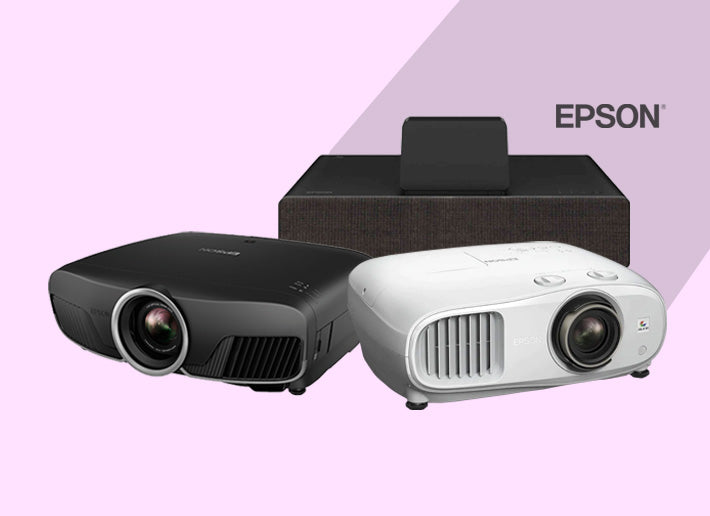
A home theater system can also help create just the right environment in which to enjoy your favourite movies by adjusting lighting, closing the drapes, even turning on the popcorn machine! For the music lover, a home theater system can also do double duty and reproduce your favourite music recordings with startling clarity.
Needless to say, the home theater systems, especially the speakers have to be installed properly for an immersive listening experience. Here, Ooberpad’s blog-cum-guide shares tips to install home theater speaker systems correctly to get an optimal and mind-blowing surround sound experience.
A Glance at the Speakers
Most Home Theater systems will stick to a 5.1 or 7.1 channel arrangement, although there certainly are systems that utilize far more than this number of speakers. Before you understand their placement, it is helpful to know each speaker’s role in the system. Let’s stick with 7.1 for now and quickly summarize the roles of each speaker:
- Front – your main speakers, these will typically be the workhorses of the system, producing most of the sound effects and some dialogue that occurs on screen during a movie.
- Center – the center channel speaker’s primary role is dialogue, and the speaker is usually placed directly below or above the display to anchor the sound to the screen.
- Surrounds – these two speakers handle ambient sounds or effects that are intended to be around the listener.
- Center Back Surrounds – these two speakers provide a more precise portrayal of sounds that move from front to back of the sonic landscape, such as flyovers.
- Subwoofer – The subwoofer is used to deliver much of the impact and “thump” from the system, so if you really want to feel the sound as much as hear it, don’t skimp here!
And now, the Speaker Placement Guidelines
Here are some broad guidelines for home theater loudspeaker placement. These recommendations are not cast in stone, as almost every system and every room have some eccentricity that requires a bit of modification. However, if you stray too far from these guidelines, you will probably create more problems than you’ll solve.

-
Front Left/Right
These speakers should flank the display and subtend an angle of 45 degrees when viewed from the main viewing/listening position. Most loudspeakers sound best when placed away from the front and side walls of the home theater room. Make every effort to place both speakers on the same plane. This means they should be at the same height as each other, preferably with their tweeters at ear level when you’re seated in the prime location. They should also be placed at the same distance from that prime viewing/listening location.
-
Center
The center channel speaker must be as close to the TV screen as possible. Of course, different display types may require different approaches to get the best placement. Here are some suggestions. Place the center channel speaker so that its tweeter is at the same height as the left and right channel tweeters. Ideally, all three tweeters will be at seated ear level. If your room doesn’t allow for this ideal placement (and many won’t), place the center channel speaker immediately below (preferred) or above the display’s vertical centerline. Make sure you choose the location (above or below) that places the tweeter closest to an imaginary line drawn between the tweeters of left and right main speakers. Make sure you “aim” the center channel speaker at the seated ear level of the primary viewing/listening position.
-
Surrounds
In general, place the main surround speakers well above ear level on the side walls. They should be slightly behind the main listening/viewing position and above ear level so that the speakers’ radiation patterns avoid excessive localization, which can prove distracting while watching a movie. Avoid aiming directional surround speakers directly into the prime listening/viewing area. In some cases, bouncing surround information off a rear wall before it reaches the ears of those in the audience might be advisable.
-
Center Back Surrounds
Mount the additional rear surround speakers high on the rear wall at approximately one-third intervals. Thus, the left rear surround speaker should be placed about one-third of the way across the wall from the left corner, while the right rear surround speaker will be best placed about one-third of the way across the wall from the right corner.
-
Bass Management

When setting up your home theater, proper bass management is a key step to making sure your system sounds as good as it possibly can. Not every loudspeaker is designed to be able to reproduce deep bass frequencies. It can take a fairly large speaker and woofer to really hit the low notes effectively, and asking a small bookshelf speaker to try and reproduce some of the more demanding bass effects on a movie soundtrack can sometimes result in distortion or even damage to the speaker if it isn’t designed to handle those frequencies. Fortunately, most home theater receivers and surround processors offer some settings to allow you to specify whether your speakers should be played as “Large” full range speakers, which can handle deep bass signals, or if they should be designated as “Small” speakers which will have their deep bass signals rerouted to the subwoofer. This way you can let your smaller speakers play the way they were intended while letting the subwoofer handle the heavy lifting which it was designed for.
-
Timbre Matching
Every loudspeaker has its own sonic characteristics that are determined by things like the materials used to construct the speaker, as well as the actual design of the speaker. The overall sound of the speaker is sometimes referred to as its “colour” or “timbre”. When considering speakers for a home theater, another factor that should be considered is “timbre matching”. That is, you want all of the speakers in your system to sound more or less the same so that when a sound effect pans across different speakers there is not a noticeable change in the sound. For example, if in a movie track a car were to drive across the screen the sound might originate in the left front speaker, the transition to the center channel then exit from the right front speaker. Ideally, the sound should appear consistent across each speaker. For this reason, it tends to be preferable when choosing a speaker system to stick with the same manufacturer and speaker series when possible, as this will ensure a matched sounding system from all channels.
We hope these tips help you get the home theater system of your dreams. If you are still unable to get your system up to the mark, you could always get in touch with the helpful and resourceful Ooberpad team. Do you know any tips or tricks that could be added to the list? Use the comment section below to share your suggestions and nominations.










